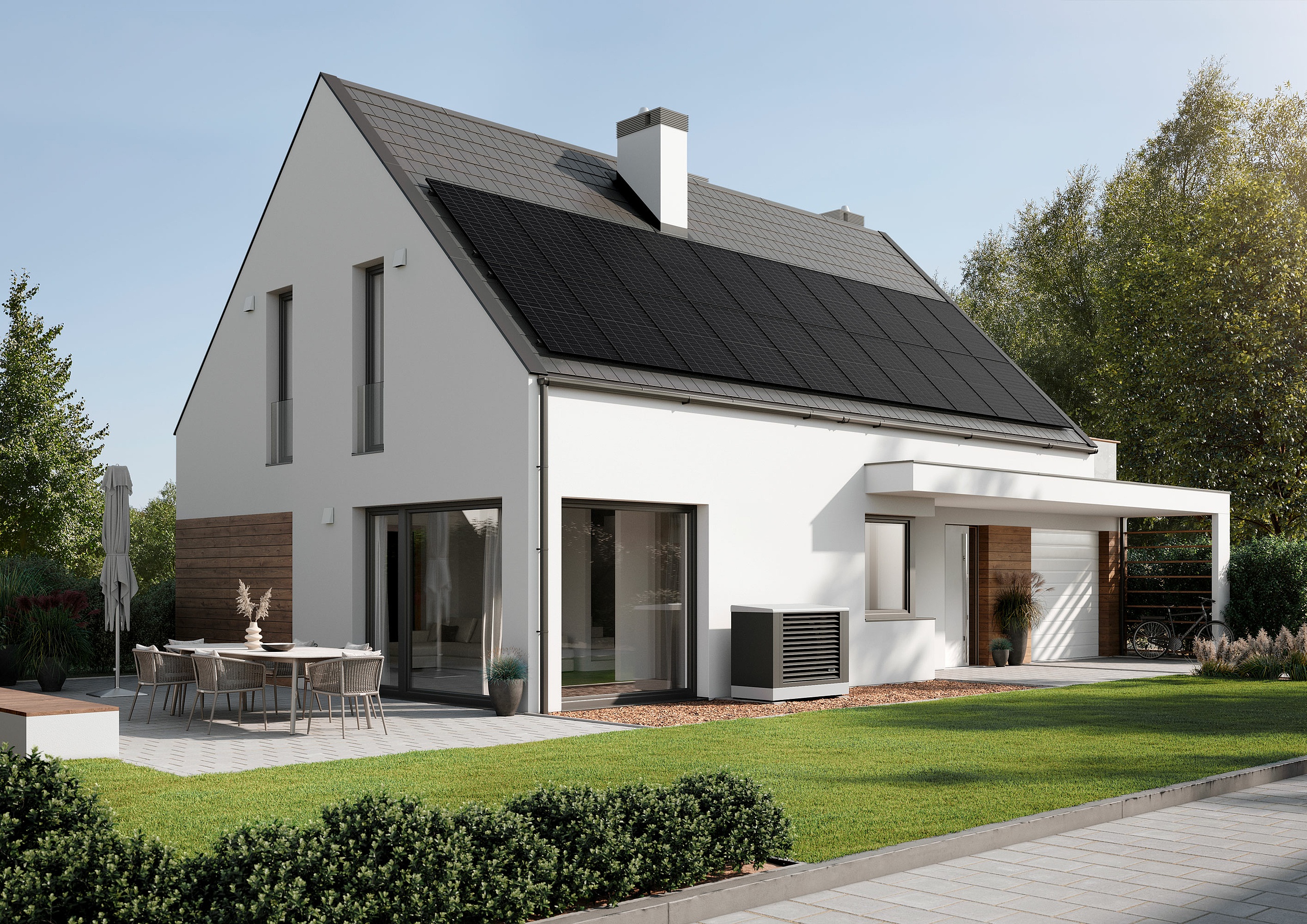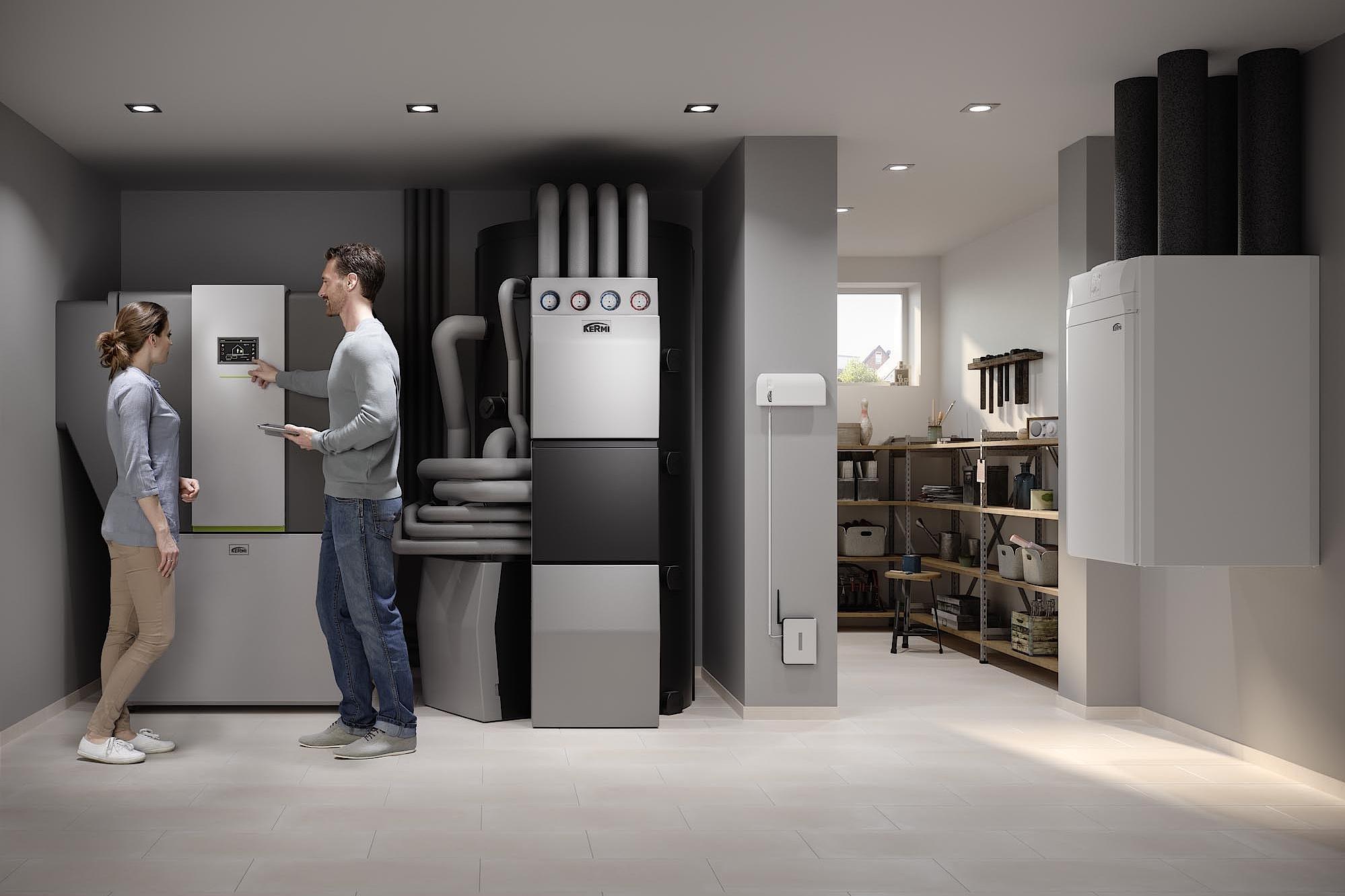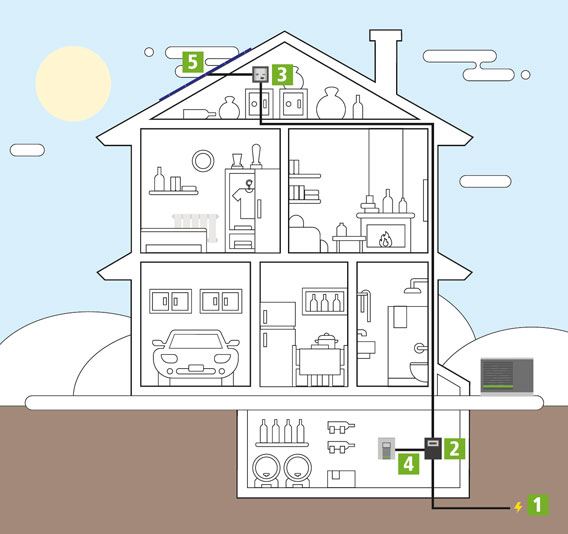Combine a heat pump with solar panels

Heat pump with solar panels
From an ecological point of view, it makes perfect sense to combine a heat pump and a solar panel system. Heat pumps need conventional electricity to operate, while a solar panel system generates electricity from solar energy.
x-change dynamic heat pumps have an integrated solar panel interface as standard. The surplus electricity generated from your own solar panel system (which works in conjunction with a battery storage system) is then used to generate heat rather than being fed back into the public grid in return for little money.

Use self-generated electricity from solar panels
Your own photovoltaic system converts free energy from the sun into electricity. Depending on the tariff and meter arrangement, this can be consumed directly by the customer, fed into the grid, or stored in an electricity storage unit. If the electricity generated in this way is used for the heat pump, the result will be a heating system that is almost entirely independent and carbon-neutral. This is also extraordinarily cost-effective in combination with an electricity storage system, because Kermi heat pumps allow for particularly efficient use of your own electricity. With a heat pump, consumption of your own self-generated electricity can be significantly increased and stored in the form of heat and cooling (in a heat or cooling storage tank) for later use. That makes the Kermi x-change heat pump even more efficient.
Benefits:
- The self-generated solar electricity can be used to operate the heat pump.
- With a heat pump, consumption of your own self-generated electricity can be significantly increased and can also be stored in the form of heat in the layer buffer storage tank for later use.
- The Kermi x-center x40 controller is ready for operation with solar panel systems (S0 interface, integration in smart homes).
- The Kermi system takes the current electricity requirements in the house into consideration – the heat pump is not activated until enough electricity is available.
How does the Kermi x-change heat pump use the electricity from a solar panel system?
To identify how much energy is available, the x40 controller of the dynamic heat pump needs to be connected to an electricity meter with an integrated S0 interface (a hardware interface for the transmission of measured values – transmission takes place with the help of pulses). Energy suppliers can provide electricity meters that already have an S0 interface built in.
When selecting an S0 electricity meter, the following conditions must be met:
- S0 transmission of only the current surplus or fed-in energy
- Meter with backstop
- Active power transmission of the S0 interface
The electricity meter is installed in such a way that it only measures the energy that is currently being fed into the grid by the solar panel system (electrical consumption in the household is already deducted). For example, a 2 x 0.8 mm² YR blade cable can be used as the cable from the electricity meter to the heat pump. Two wires are required (S0- and S0+) and are connected to the x40 controller of the heat pump.
Once the heat pump has detected how much energy is available, the setpoint temperatures for the heat pump and, as an option, for electric heating rods can be changed according to this signal. The heat pump and heating rods are then set to increased operation. This is how the self-generated solar panel energy is stored as heat.
